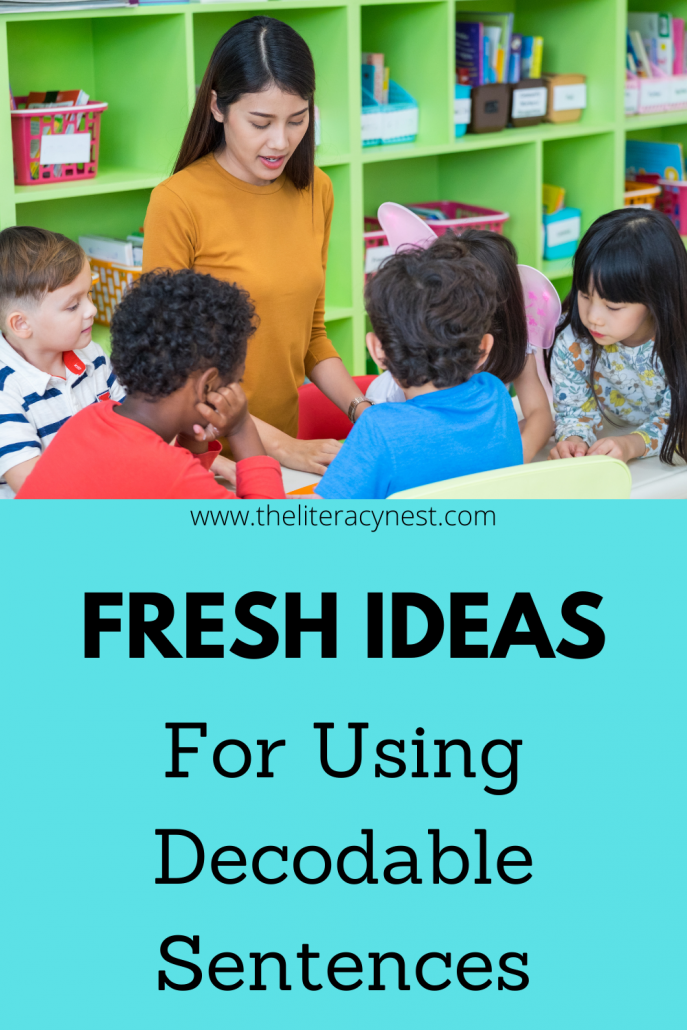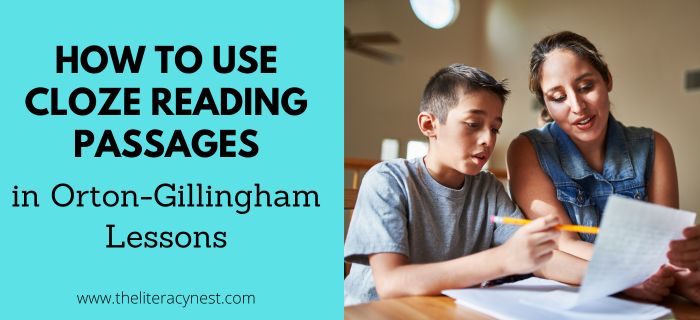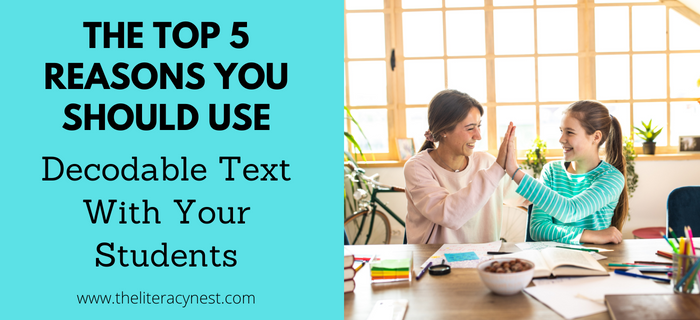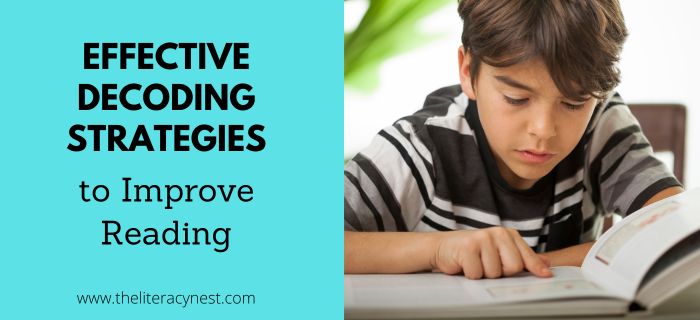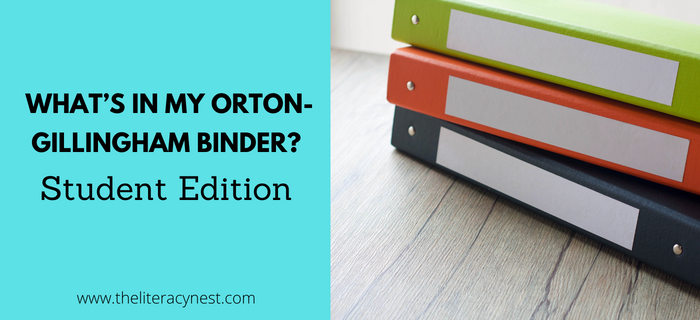Fresh Ideas for Using Decodable Sentences
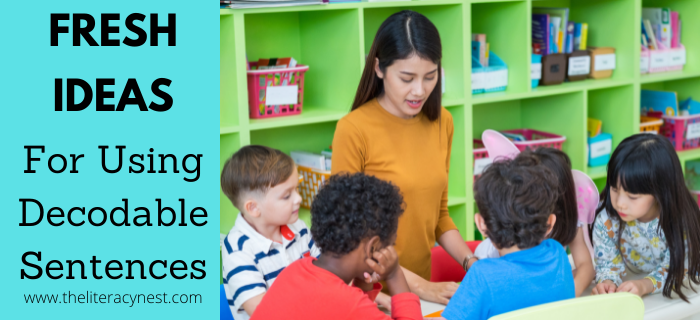
Decodable text is written in such a way that it contains very few if any unknown concepts. It uses known syllable patterns, phonemes, and learned words. The complexity of decodable text changes as your students learn new concepts. A decodable sentence for a student working on CVC words with short a is going to look very different from a decodable sentence for a student that has 5 syllable types and multiple syllable division patterns under their belt and is learning a new vowel team. When choosing or writing these sentences, it is important to take into consideration the individual child and the concepts they have been taught.
The Challenge is Real!
One of the biggest challenges can be getting your students to stop guessing and start decoding. The guessing habit is very hard to break. In many cases, students are being taught to guess using the picture or meaning of a story, or perhaps looking at the first letter. What makes this habit even harder to break is that it works some of the time. Sometimes they guess right. Using decodable text can help break that cycle.
Decodable text allows students to apply the decoding skills and strategies they have learned. Students can read these stories without relying on guessing or using picture clues. The use of carefully chosen texts allows students to experience a high degree of success and reinforce desired literacy behaviors. The use of known concepts frees up cognitive energy to focus on fluency or comprehension.
The Value in Decodable Text
Clearly decodable text has a valuable role to play in your Orton-Gillingham lesson plans. But why decodable sentences? Why not just read decodable passages or decodable books? There are several valuable reasons for utilizing decodable sentences as part of the lesson sequence. I always have students read several decodable sentences that use the new concept from the lesson. It helps us to build from practicing the smallest parts (phoneme card drill) to the biggest parts. In reading, we move from looking at a phonogram in isolation, to using it in words, sometimes we will practice this concept in phrases, and then in sentences. In writing the progression is much the same as we move from what says? to SOS word dictation and finally to sentence dictation.
- Reading decodable sentences gives concentrated focused practice. Students work on putting their new learning to work in context.
- Reading sentences is less overwhelming than reading an entire story, especially for students working on something brand new and challenging.
- Visual overload can be reduced further by cutting sentences into strips. Decodable sentences give the option of providing more focused practice on a new skill, while using longer stories to practice fluency and orchestration of previous learning.
- Decodable sentences provide great opportunities for repeated reading to work on fluent phrased reading. These sentences also provide a quick assessment of how the student is doing applying their new learning.
- Decodable sentences lend themselves nicely to at home practice or use in reading games. It is amazing how adding the simplest element of play to reading a sentence can increase engagement.
A Routine for Sentence Reading
Depending on the lesson structure you follow, there are several places in the Orton-Gillingham lesson where you might use the decodable sentences. Consider the following options.
- Decodable sentences can be used in the review part of the lesson to practice orchestrating recent learning.
- Decodable sentences are frequently used as part of the new concept practice.
- These same decodable sentences aren’t only for reading. They also make excellent practice for dictation. As long as care is taken to choose sentences that contain known learned words, students can effectively practice writing and spelling. Some lesson plans have segments of the lesson devoted to fluency work.
- Decodable sentences lend themselves well to fluency activities.
- Similarly, they might be used as a warm-up activity. In addition to reading or writing decodable sentences, you might have students highlight specific patterns, label syllable types, or divide words into syllables.
- A great review activity is to get a student’s brain activated by having them mark up everything they know about a particular sentence.
- You could have them label the syllable types, mark digraphs, write in macrons and breves, underline base words, circle suffixes, and indicate bonus letters such as in words that follow the floss rule. This is not only an excellent chance to see what the child can do but gives the student an opportunity to see just how much they have learned.
- You can even use them when teaching grammar! Ask your students to identify parts of speech with symbols like a box for the subject and a triangle for adjectives.
Repurpose games with decodable sentences!
- Read a sentence and take a turn.
- Another fun way to practice is using sentences as a sort of roll and read activity. Students roll a dice and then read one of the numbered sentences. Can they read them all?
- Students can pick an emoji and read the sentence using that emotion or read a sentence using different accents or character voices. Not only is this fun, but it builds skill at reading with prosody and expression.
Making decodable sentences a part of your reading lessons can have numerous benefits. Decodable sentences lend themselves to short practice sessions of all kinds and keep your OG lessons prescriptive and rigorous.
Need more ideas for using decodable sentences?
Wondering where to find Decodable Sentences?
The Decodable Sentences Bundle contains over 140 pages of decodable sentences!
Sure, you could spend hours writing your own, but this bundle done for you! It is SUCH a time saver.
Thank you so much for stopping by today!
